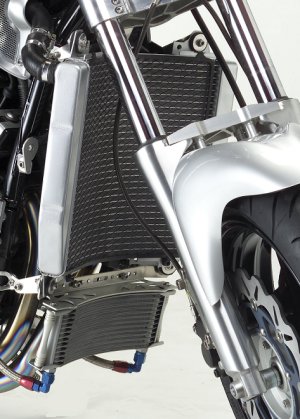vonk,
A liquid-to-air heat exchanger core requires higher air pressure ahead of the core than behind it, otherwise the airflow would stagnate. So one might consider that a "forced" condition.
As for the size and orientation of the core, it is a compromise between conflicting requirements of core surface area, thickness, pressure drop, heat rejection, rules, etc. The core would produce the least drag if the face (and airflow channels between the fins) were oriented normal to the airflow. But given the heat exchange surface area required and the side pod space available, this would result in a core with a small frontal area and an extreme thickness. Such a thick core would likely produce a high pressure drop and unacceptable flow loss.
Apparently, the better compromise is to use a thin core with large frontal area, but mounted at an angle to the local airflow direction so that it fits within the side pod space. There are still flow losses with this arrangement, since the airflow loses velocity when it has to change direction to pass through the core. But still maybe less than those of a very thick core.
Of course, one notable exception to this was the radiator on the P-51 Mustang. It had a small frontal area and an extreme core thickness, but was purported to have no drag penalty.

So, a well designed heat exchanger and duct installation should produce little, if any, drag penalty. In fact, it may even produce a small net thrust. You need to consider that there is lots of thermal energy being imparted into that cooling air mass that is being accelerated out the duct exit.
riff_raff


At F1 speeds, that little fan's gonna make no difference whatsoever!


